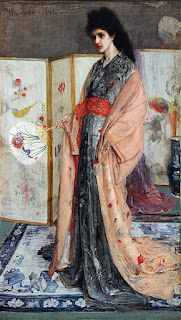Last week's blog was a lead-in to this week. As I previously mentioned, the Impressionists were inspired by the art in painting, woodblocks, and paper that was being imported from Japan. There was another form of Japanese art that was captivating them. It was the beautiful and excellent cloisonne enamel vases made by Hayashi Kodenji (1831-1915)
Cloisonne is French for "closed." It's an ancient process where metal strips or wire (usually gold or silver) outline a design. The ancient Egyptians used the process and then put precious or semiprecious stones in the enclosed area. However, for the purposes of objects practically used, powdered enamel filled the open areas and then the whole object was fired in a kiln.
Kodenji was a master of the technique.In his Nagoya studio, he was also a brilliant marketer. The story goes that he literally walked his vases to the port of Yokohama to place them carefully on the ships heading to Paris. He made sure they were featured at the 1868 & 1878 Paris and 1873 Vienna Expositions.
The Europeans were quite taken with the beauty and quality of the workmanship. Kodenji, along with a few other Japanese cloisonne enamel masters were held in very high regard.
(When you look at some of the floral designs do you see where Monet's Giverny gardens might have been conceived?)
The high demand meant many cloisonne enamel artisan studios thrived in Japan in what was to be the Golden Age of Japanese cloisonne enamel. The last studio is now gone. The archives, tools and enamel materials are preserved in the Museum of Kyoto.


















